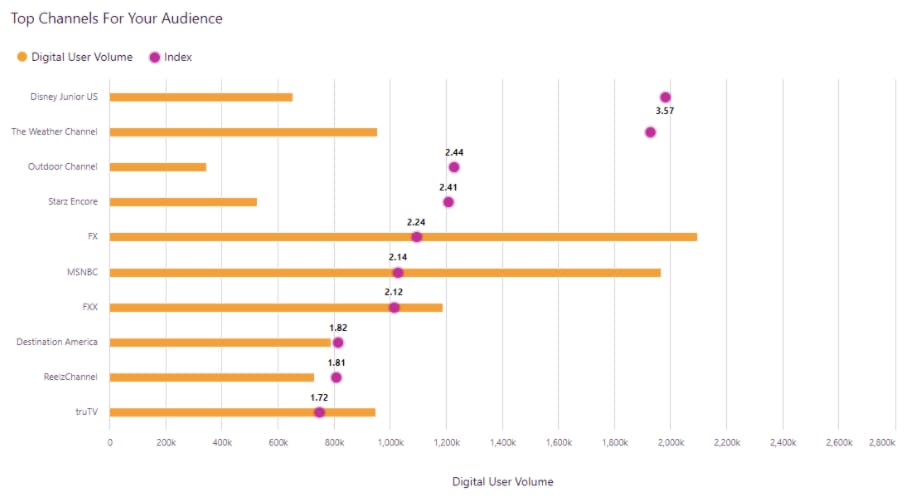
People consume media across many devices and screens, which generates tons of digital data and many opportunities to measure the success of ad campaigns. But the fragmentation of attention across screens has created challenges for marketers who need to connect the digital and linear TV worlds. A connected approach to digital and TV leads to more opportunities to reach audiences across platforms and drive increased engagement. Before we dive deeper into the world of Advanced TV and what it means for traders, let’s define some key terms that will allow us to fully grasp the whole picture.
Automatic Content Recognition (ACR) ACR allows marketers to understand what content and advertising consumers view on linear and connected TV screens. Advertisers can use it to understand who has been exposed to either their own messaging or their competitors’ messaging. ACR recognizes program and TV advertising content via hardware placed directly within a TV set. Not only does this include content being watched, but also where it plays and for how long.
According to AdExchanger, “ACR can help marketers better connect ad spend to business goals, such as driving in-store traffic and making smarter TV planning decisions.” When leveraging ACR data, marketers can plan and measure with data from Linear TV. Linear TV refers to the traditional, real-time television service that is broadcasted through satellite or cable, but not specifically streamed to a specific user. Marketers can also plan with Connected TV (CTV) which offers more user specificity. CTV refers to any TV that can be connected to the internet and allows for content to be accessed via apps, OTT devices or casting devices.
Planning with ACR data
Marketers these days face many challenges… from increasing audience reach, to retargeting the right users at the right time in order to maximize engagement. ACR data allows one to access a variety of data points to help better connect TV and digital, from visual ACR to Audio ACR data. These data points can help increase reach by identifying, as well as targeting channels and programs across connected TVs that are not already being targeted in a linear buy. The data points can also be used to increase audience engagement by sequentially targeting previously exposed linear audiences across other devices.
In order for TV retargeting strategies to be as efficient as possible, you need to be able to understand the viewership behavior of your online audience through deterministic ACR data. One of the challenges with ACR is that the data volume is massive and can be unwieldy for marketers to manage. Our proprietary Intelligence Hub means our traders can access ACR data trends without needing to have sophisticated data science skills, providing insights from 3rd-party sources and programmatic exchanges.
Linear TV Retargeting
To extend an advertiser’s reach beyond their linear plan, programmatic traders start by monitoring the linear TV viewership behavior of the advertiser’s pixel audiences. They do this in order to discover which television channels and programs are indexing highly against the advertiser’s pre-existing site visitors.

Traders then build DSP segments linked to the ACR data which allows for 1:1 retargeting across CTV and digital. This targeting can act as a form of lookalike modeling by reaching users who behave like the advertiser’s preexisting customer pool. It can also be used to reach incremental audiences by targeting competitor linear TV buys, or even by simply targeting a specific, curated list of programs or channels. With a breadth of data, our traders are able to shape a customized campaign and build specific strategies for an advertiser to enhance performance and meet their KPIs.
How does CTV fit in?
Linear and connected TV are symbiotic and when optimized together, create more outcomes for marketers. With ACR, programmatic traders use insights from CTV to inform which apps and devices advertisers should run on in order to maximize performance. Linear and CTV work together by informing which combination of the two perform best for reaching an advertiser’s target audience.
Running linear TV and CTV side-by-side helps marketers understand behavioral differences in TV viewership between the “cord-cutters,” “cord-shavers,” and “cord-nevers” that make up their audience.This also helps them understand where and when to invest future ad spend to ensure their reach and frequency are optimized.
Our dedicated inventory team has curated partnerships with CTV inventory suppliers to reach the viewers who are hard to access on linear alone. Curating the CTV inventory maintains brand safety and minimizes ad fraud, has CTV viewable, brand safe, and has low fraud risk. Our programmatic traders then optimize towards KPIs such as video completion rate (VCR) or CPA. They do this by using a DSP-agnostic approach to make sure we buy the most efficient inventory at the best-possible price for the advertiser.
What about other digital devices?
Once your reach and frequency is maximized across linear and CTV, you can go a step further to make your TV plan performance focused. As mentioned earlier, ACR data allows us to connect TV viewership to your digital audience. This means we can reach people within households that have been targeted with your TV ad on other devices like desktop or mobile.
Now, you can use a strong CTA, whether that’s downloading your app, driving traffic to your site, or sending consumers an offer to use in-store. We can also do the same when your competitor’s ad airs so you can take more share-of-voice and conquest your competitors directly.
Our programmatic trading team understands the value of maximizing performance and delivery on high quality inventory, and they see this recent increase in linear and CTV viewership as an excellent opportunity to use a strategic Advanced TV approach. In a recent study we conducted with Digiday, we found that Connected TV is set to command more omnichannel programmatic strategies and grow in regions such as the US, making it more important than ever to hone in on CTV planning and activation. Check out the report here.
To learn more about our Advanced TV offering check this out or get in touch.



